Table of Contents
A History Lover's Guide to Mechelen, Belgium

Mechelen is a small Belgian city with a large amount of history to share! Located in the Flanders region between Brussels and Antwerp, a visit to Mechelen makes for a perfect day trip! This guide provides historical context and ‘must-see’ recommendations for visitors interested in not only seeing Mechelen’s romantic Renaissance architecture, but gaining a deeper understanding of the city’s historical context. Let’s visit Mechelen!
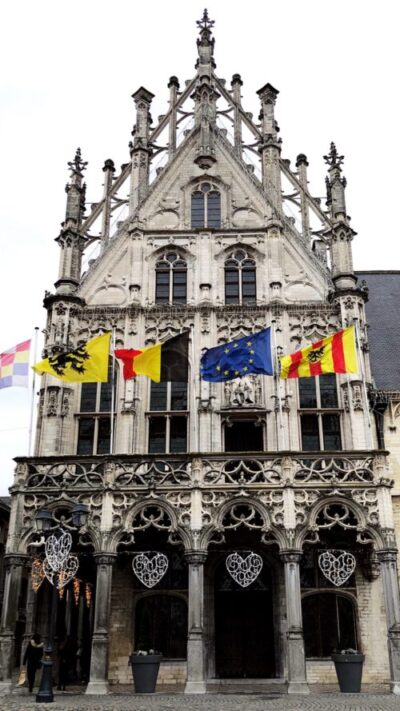
Brief History of Mechelen
Today Mechelen has a population of about 86,000 and is increasing in popularity as a tourist destination. But first, let’s go back in time a bit. Belgium as we know it was established in 1830, following the Belgian Revolution when Luxembourg, the Netherlands and Belgium separated to form independent states. Prior to the 1800s, the area that is today Mechelen has a long history. During the Late Middle Ages (1200 – 1500 AD), Mechelen was a prominent hub of the cloth trade, making it an important economic and political center in the region. But, by the 1600s political influence had shifted to Brussels, and Mechelen’s economic power waned. Subsequently, the city’s prominence in the area of religious influence grew. A few of the sights I recommend visiting are testaments to this point in Mechelen’s history.
We stumbled upon this beautiful picture of Ijzerenleen by a Romanian visitor. 🤩 📸 by radu.nita
Posted by Visit Mechelen on Sunday, January 12, 2020
Modern Mechelen
In more modern history, Mechelen was at the forefront of the Industrial Revolution. 1835 brought Europe’s first railway, linking Mechelen with Brussels. This opened up the city as a hub of the Belgian rail system and to extensive development of metalworking trades. The economic benefits of Mechelen’s railway system were turned to a sinister use after Nazi occupation of Belgium. Mechelen became a central transit center for the deportation of Holocaust victims to Auschwitz-Birkenau. Kazerne Dossin – Memorial Museum and Documentation Centre on Holocaust and Human Rights now stands at the site of this horrific piece of Mechelen’s history reminding visitors that it is critical to remember the both brightest accomplishments and darkest moments in a city’s history.
Visit Mechelen, Belgium!
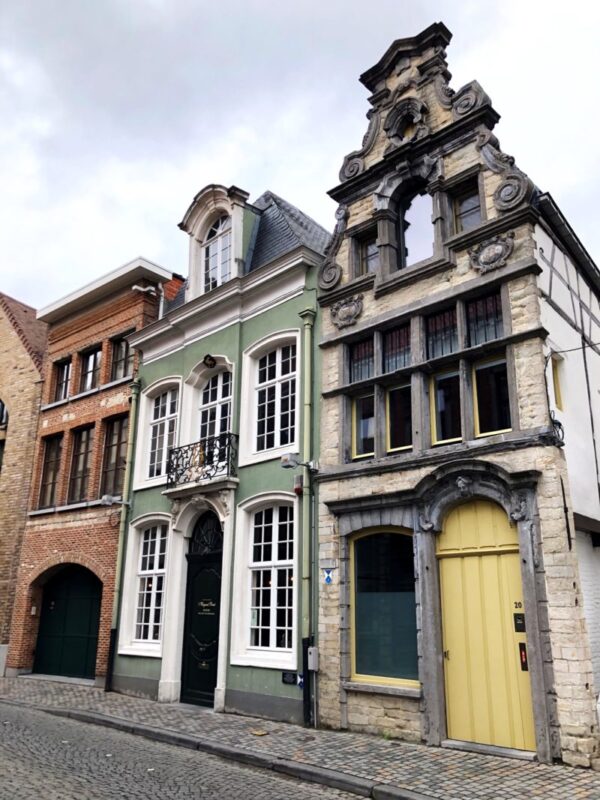
Brusselpoort (Brussels Gate)
A 10 minute walk from the Mechelen train station (the station located at the south of the city, not to be confused with Mechelen-Nekkerspoel station), you will find the the historic Busselpoort, or Brussels Gate. This giant structure dates back to the 13th century, and is the only remaining of Mechelen’s original 12 city gates. What better way to start your visit to Mechelen than by literally walking through a gate into the history of city! (Okay, you actually have to walk around the gate, but close enough!) In the 16th century the towers of Brusselpoort were lowered, and the roof was altered to reflect its current state. Unfortunately, you cannot actually enter the Brusselpoort, but it is still in use today as an arts space.
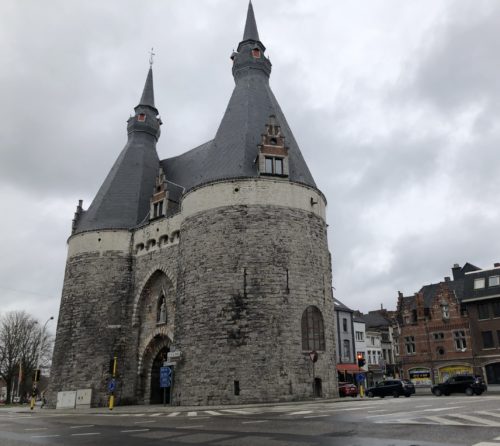
Walk along the Dijlepad
& Historic Guild Houses
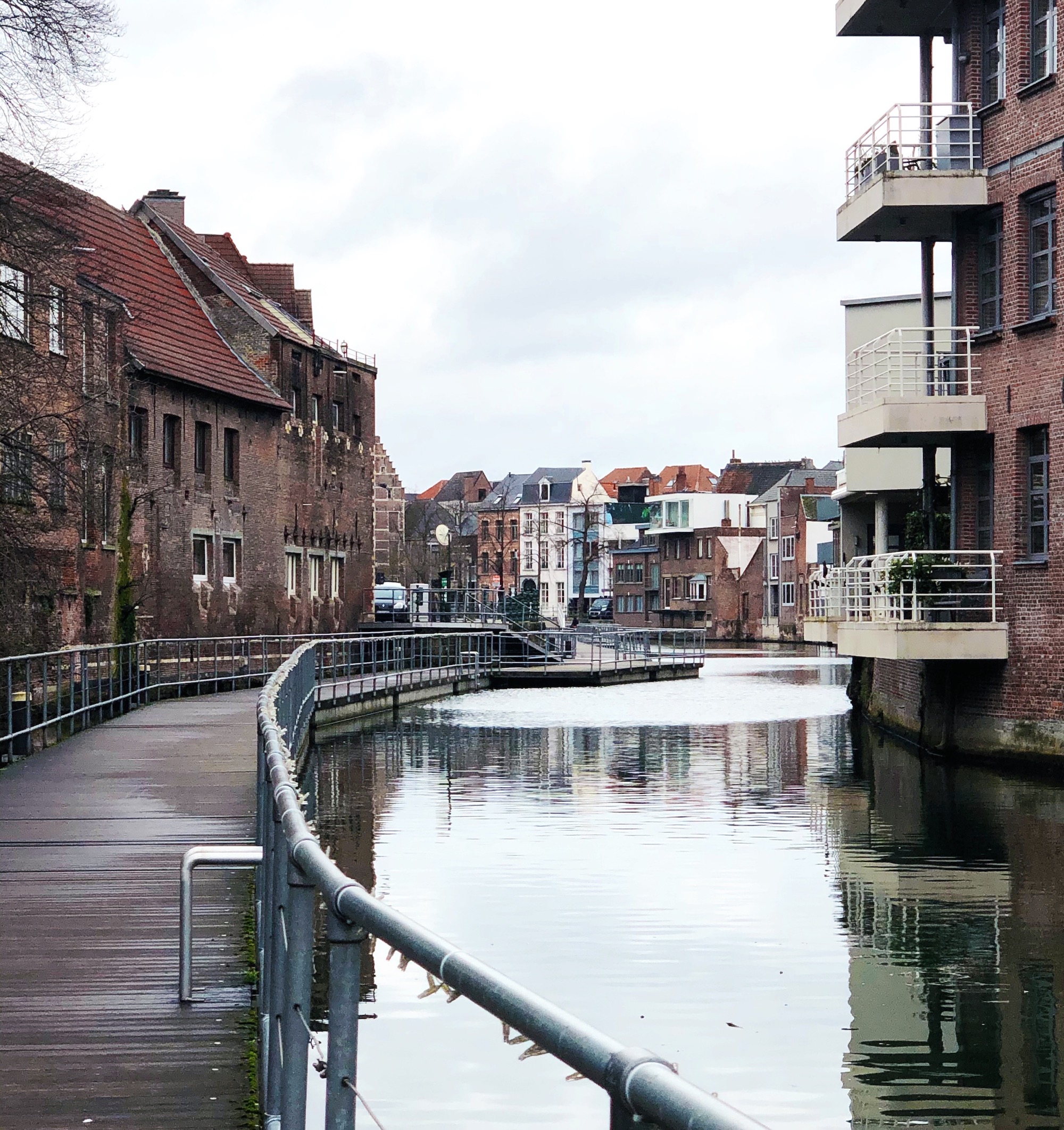
A stroll along the Dijlepad is a lovely and calming activity for your visit to Mechelen. If, like me, you’re wondering ‘What does ‘Dijlepad’ mean?’, here’s your answer. The Dijle (or Dyle in English) is the name of the river that flows through Mechelen, so Dijlepad is the walkway along the river. It is very pleasant to wander along the path with a coffee or tea. Take in the urban landscape of historic structures with detailed brick facades nestled up next to modern, artsy buildings with a chic minimalist aesthetic. If you’re visiting Mechelen in winter, as long as the weather is cooperating it is a nice outdoor activity. I was there in January alongside teenage couples and a few families with strollers.
The Salmon Building
You can enter the Dijlepad in a few places, and including near the corner of Guldenstraat & Zoutwerf if you’re walking north from the Brusselpoort. As you explore Mechelen, look out for brown signs providing bits of historical information about the city. You will find one just in front of the stairways down to the Dijlepad entrance telling you look out for a couple guildhouses with elaborate decor, including The Salmon Building. Identified by the carved salmon over the doorway, this structure served as the fishmongers guild house during the mid-1500’s. Artist Willam Geets would even come to call The Salmon Building home!
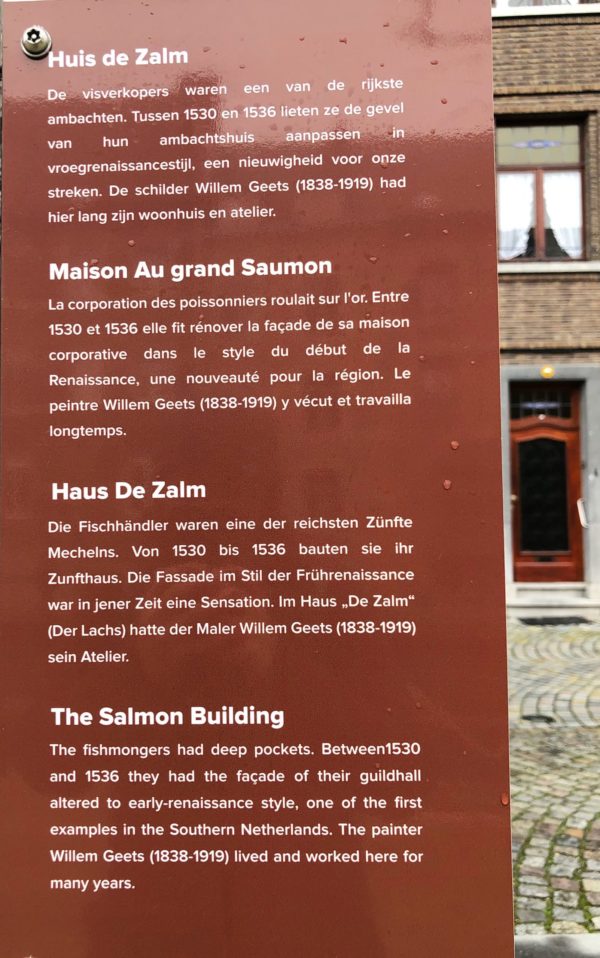
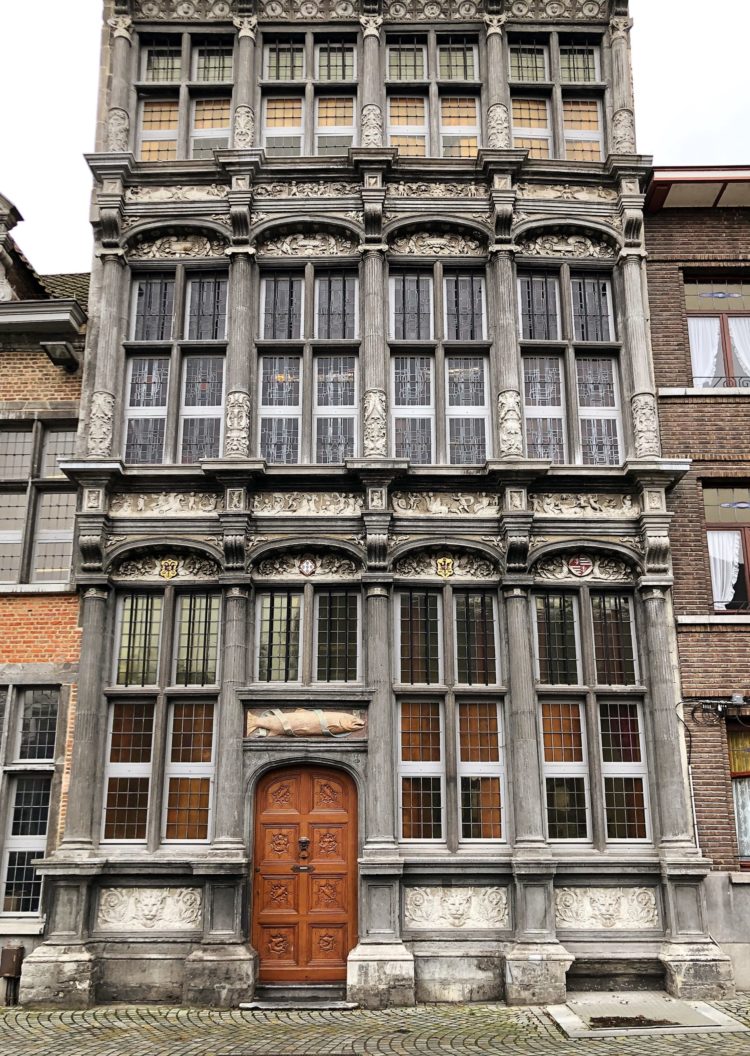
History lover’s guide to visit Mechelen.
Enjoy a Little Shopping
Okay, this isn’t history-related, but Mechelen is packed with options for a little retail therapy. You’ll find a mixture of commercial chain stores and cute, local shops or boutiques. Shopping is not usually my go-to travel activity, but even I couldn’t resist popping into a few stores! One highlight was The Cacao Project, a hip chocolaterie offering up a twist on a classic Belgian specialty!
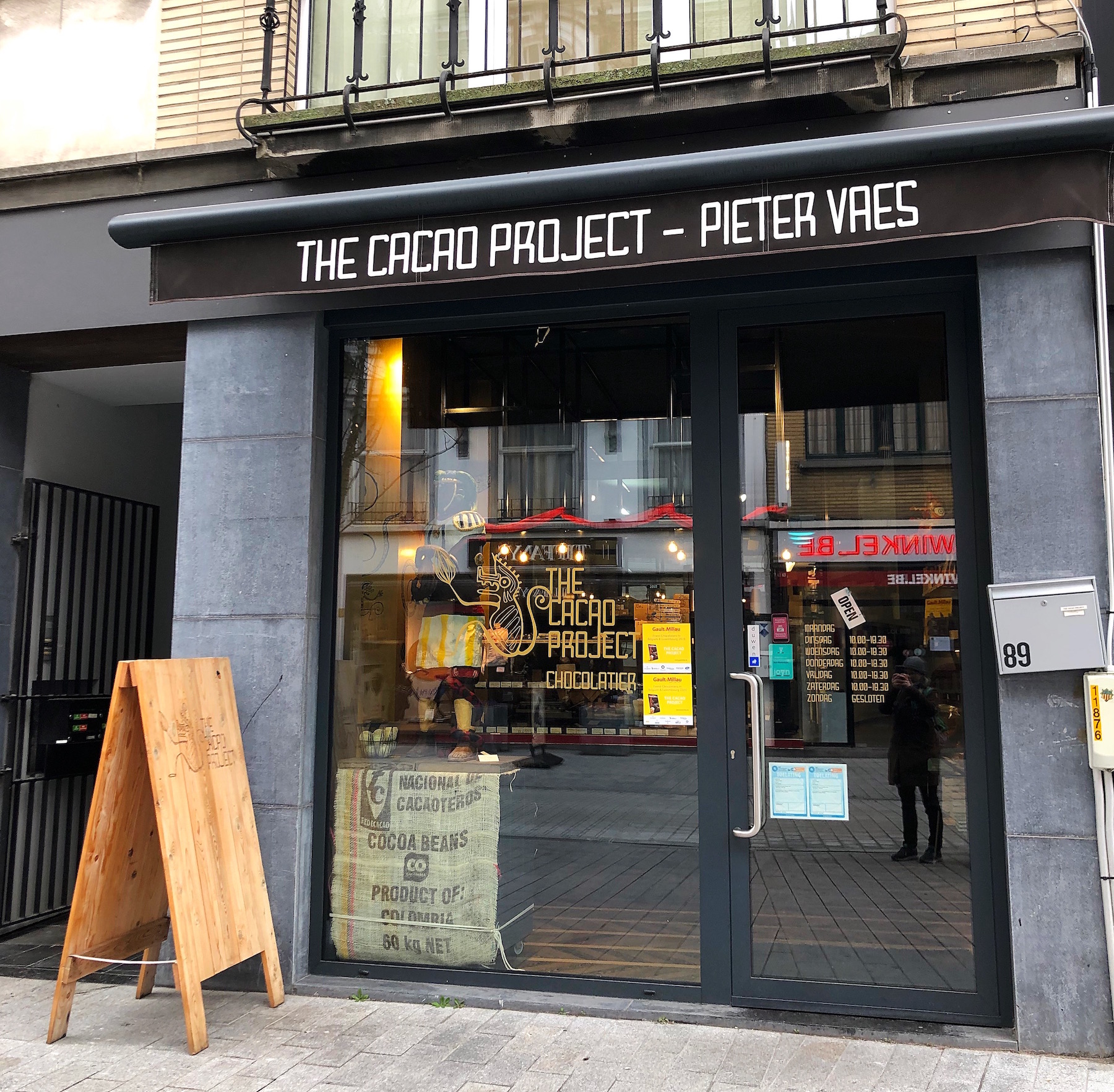
Founder Peiter Vaes first developed his touch for delicate dessert making from his grandmother, who taught him the art of making a marzipan rose! After years of study and practice, Vaes opened his own shop, The Cacao Project, along De Bruul, Mechelen’s busiest shopping street! You’ll find classic favorites such as rich, dark chocolates to unique creations like orange basil-filled truffles. (Check out their Instagram to see more of their beautiful creations!) When you enter their shop at Bruul 89 you can see into the atlier where the magic is happening behind the scenes! Even the paper wrappings on Vaes’ chocolate bars are designed by his mother. The Cacao Project is truly a local family gem in Mechelen!
Note: The Cacao Project is closed on Sundays.
View this post on InstagramA post shared by The Cacao Project (@thecacaoproject) on
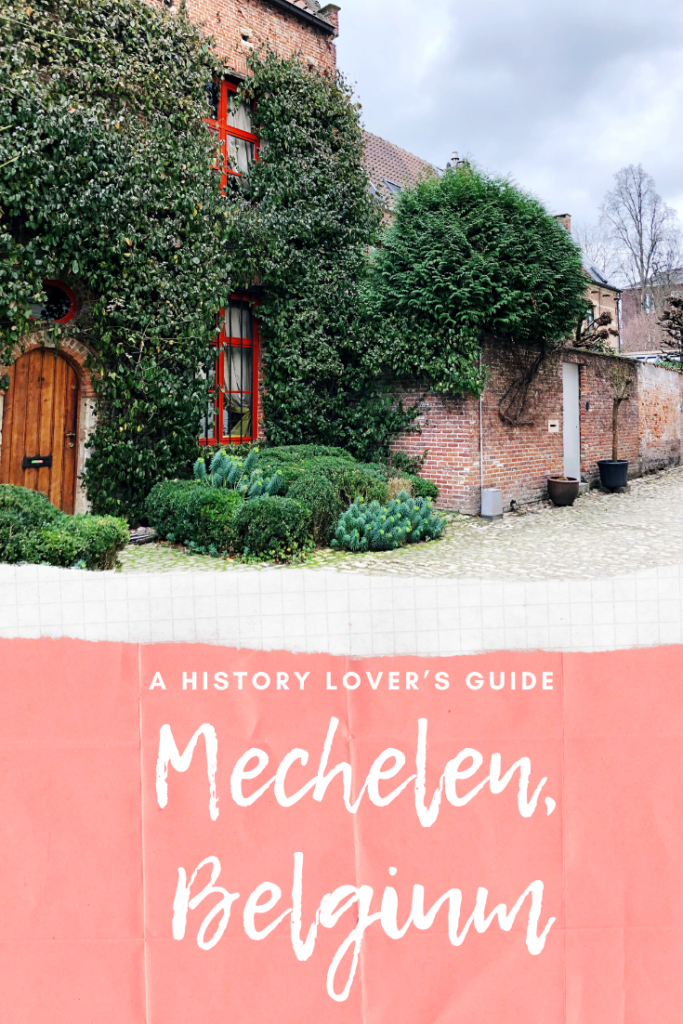
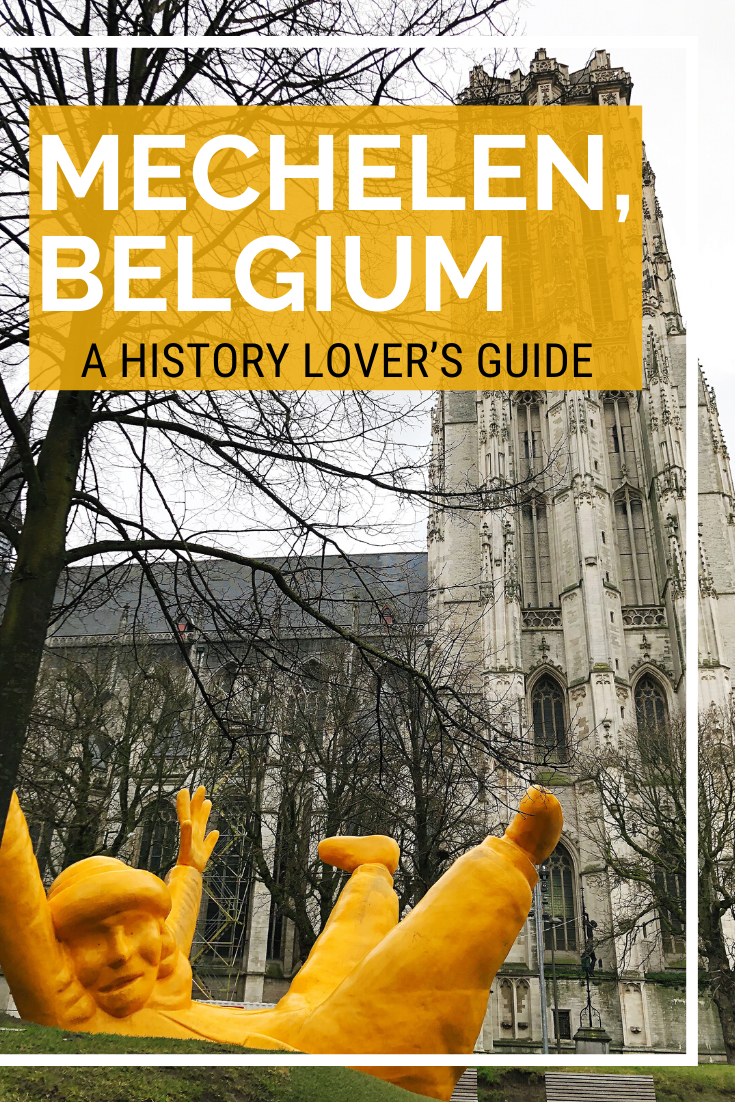
Mechelen's Grote Markt
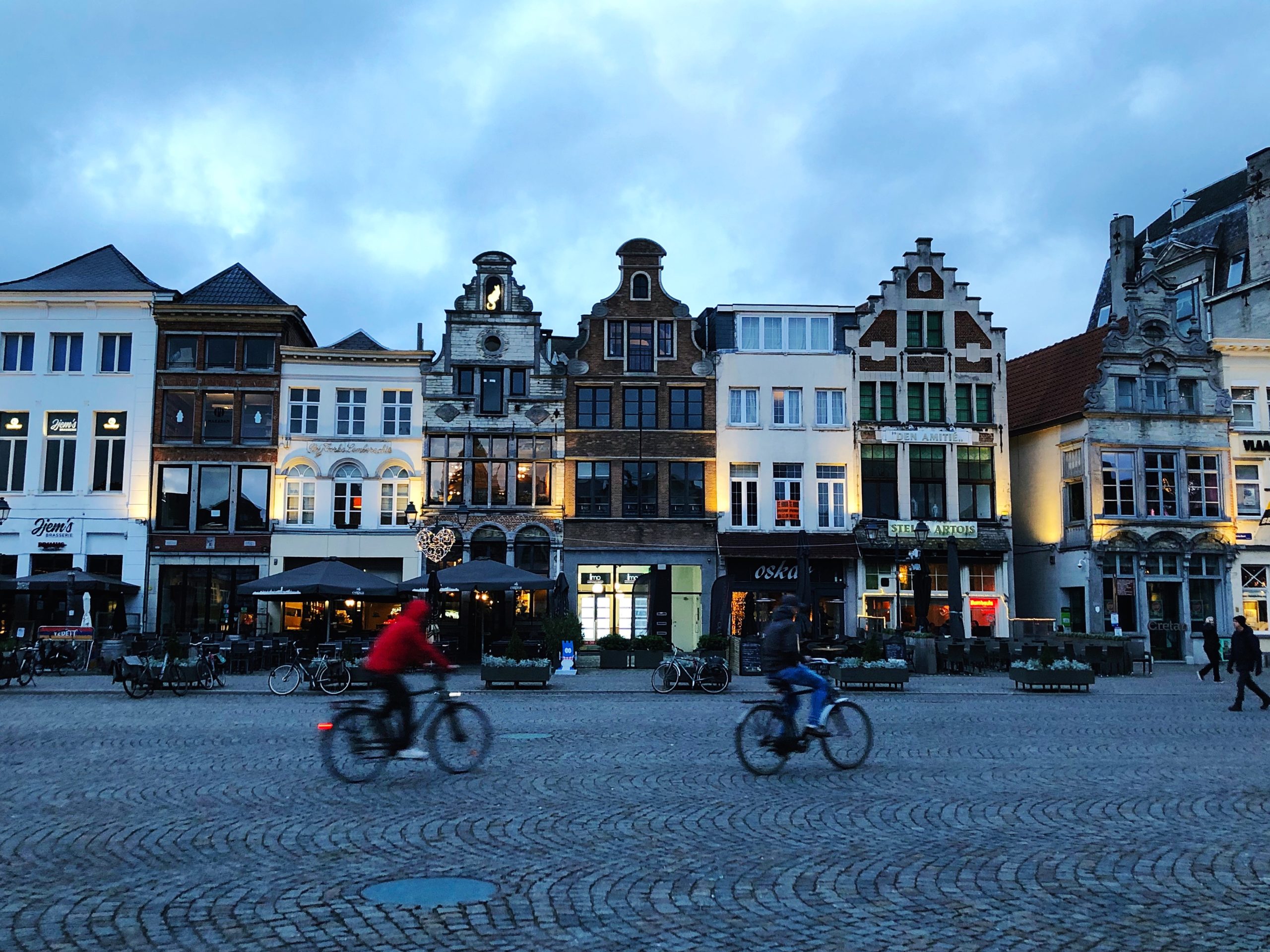
Grote Markt sits at the city center, offering a view into the rich history & culture of Mechelen across centuries. St. Rumbold’s Tower stands tall overlooking Grote Markt. The surrounding structures include Town Hall, 16th century Renaissance buildings and 18th century ornamental rococo-style structures. You will find a ‘Grote Markt’ (or Large Market) at the historic center of many Belgian cities. In 2004 Mechelen’s Grote Markt was made into a pedestrian (or bike) only area, although there is a parking garage below ground!
Visiting Mechelen on a Saturday? Head to Grote Markt for the Saturday Market filled with street vendors and snacks for sale! Grote Markt is a great place to relax for a drink and enjoy some people watching when you visit Mechelen.
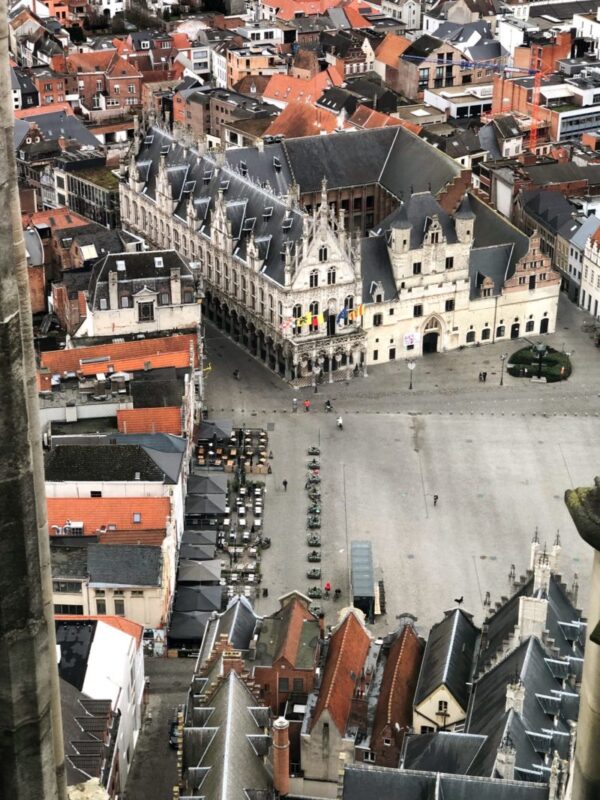
Along the eastern side of Grote Markt you’ll see the historic Stadhuis, or Mechelen’s Town Hall. One section of the Stadhuis includes an unfinished belfry that is now recognized as an UNESCO World Heritage Site. Originally, the belfry was part of the city’s cloth hall, but when the cloth trade went into decline in the 1300’s it was left unfinished. In the 1500’s a temporary roof was added, which the structure still has today. The official city tourism department of Mechelen sometimes offers walking tours in which you can visit inside the Stadhuis. Check their website here when planning your trip!
St. Rumbold's Tower & Cathedral
Walk around in Mechelen, and you will always be able to find your way back to the center by looking up for St. Rumbold’s Tower. But, who was St. Rumbold, and how did he come to have such a monumental tower and cathedral named after him?
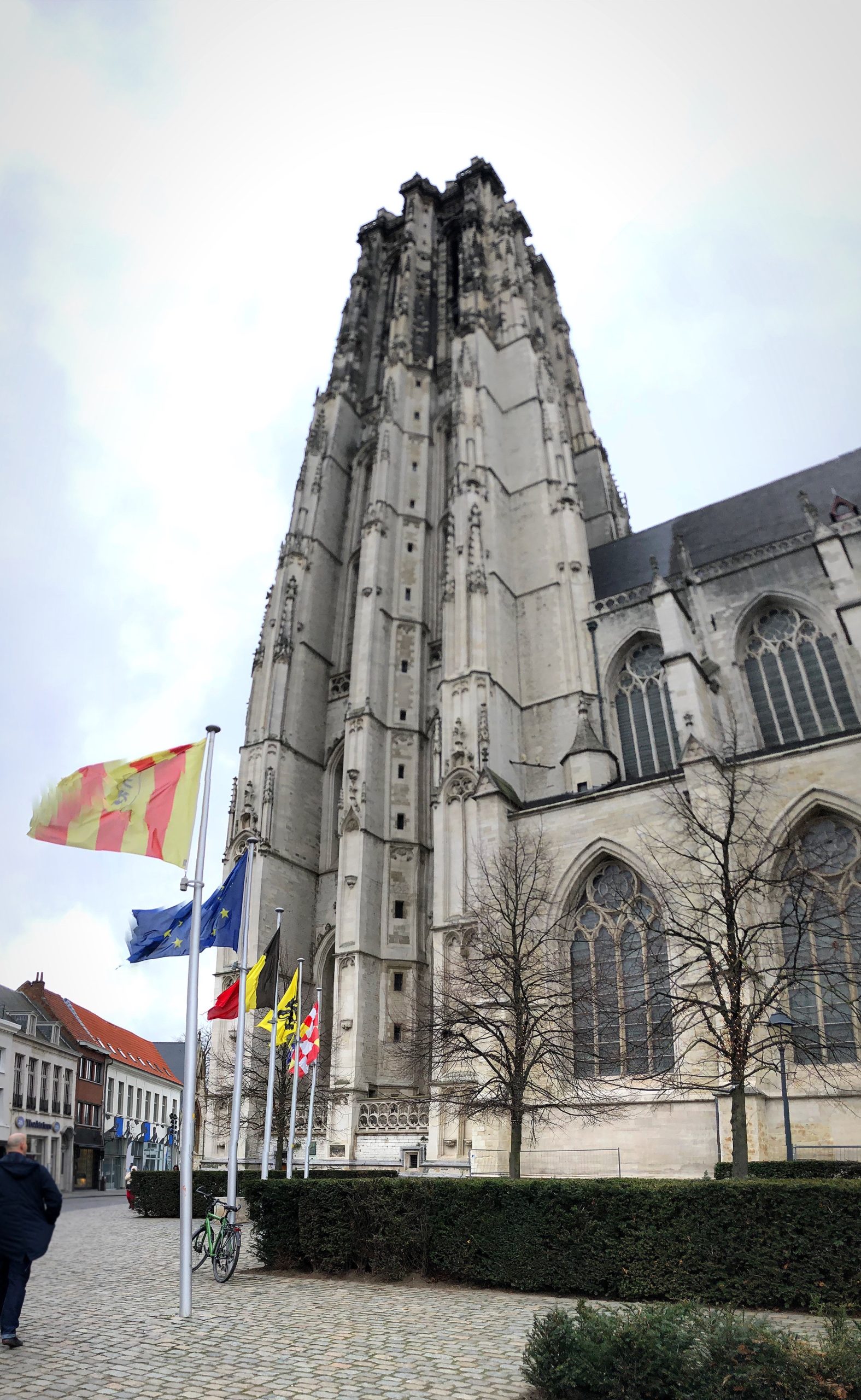
History of St. Rumbold's
St. Rumbold was a Christian missionary who lived in modern-day Mechelen sometime between 500 and 800 AD. His exact origin is unknown, but he was probably of either Irish or Scottish descent. Murdered by two individuals whom he had denounced for sinful activity, St. Rumbold is still remembered as a martyr by the Roman Catholic Church today.
St. Rumbold's Construction
Construction on St. Rumbold’s Cathedral began in the early 1200’s. It would be another 300 years until the building was complete and the tower added. Supposedly the tower was planned be 160 meters tall (about 525 ft), but it only ever reached a height of 97.5 meters (320 ft). Incredibly, the structure’s foundation only goes down about 3 feet into the ground. It is held stable primarily just by its massive weight pushing down and the upward pressure of groundwater from below.
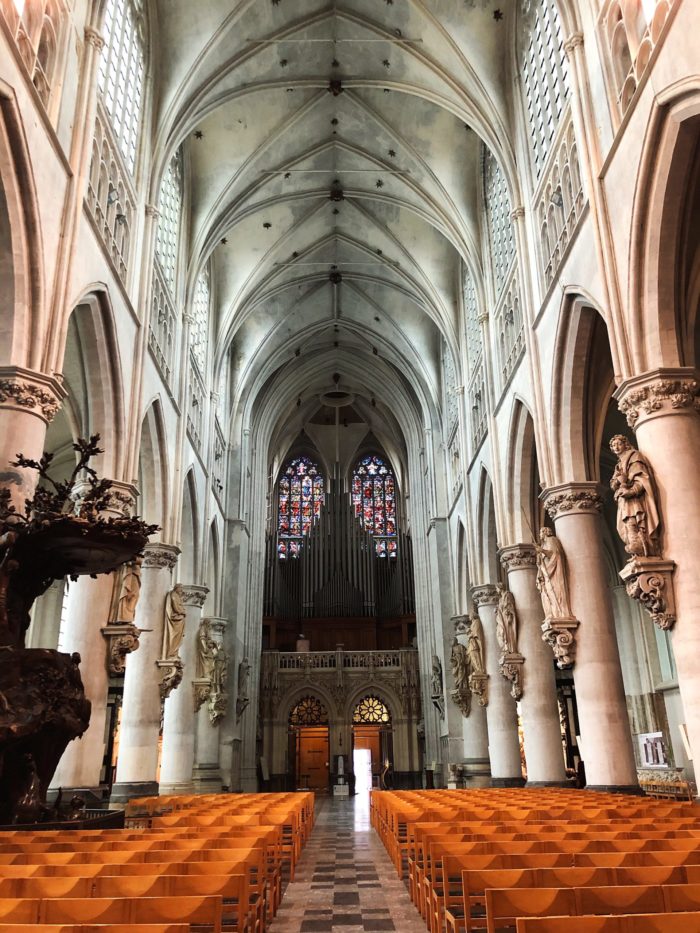
Today St. Rumbold’s still stands tall watching over the city of Mechelen, but this was not always the case. During the 16th century, shortly after the structure was completed, the interior of St. Rumbold’s fell victim to the growth in prominence of Calvinist rule. References to Catholic worship or practice were removed or destroyed. Fortunately, St. Rumbold’s escaped damage from WWII bombing and Mechelen’s devastating fire of 1972. As one of six church belfries in Flanders, St. Rumbold’s Tower is recognized as an UNESCO World Heritage site and should not be missed by anyone visiting Mechelen.
Travel Tip: The schedule and fees for visiting St. Rumbold's Tower and the Cathedral are NOT the same!
It is free to visit the Cathedral, which is open every day of the week from 8:30 am to 5:30 pm. The Tower opens in the afternoon from 1 pm to 6 pm, with the last entrance at 5 pm. It is open longer hours on Saturday. Visiting the Tower has an EUR 8 ticket costs, but it is definitely worth it! If you’re 26 or under, the ticket is only EUR 3! Even if you’re traveling on a budget, I highly recommend it. I visited during slow season in January, but if you’re heading to Mechelen during the summer I recommend booking tickets in advance. Due to the tight space within the tower, only 25 visitors are allowed to enter every 20 minutes.
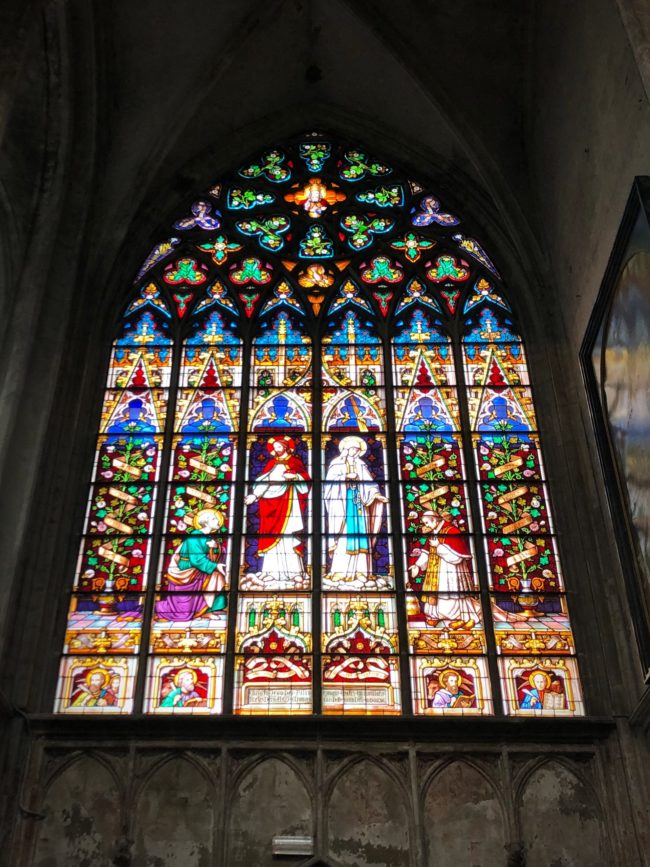
Full disclosure, visiting St. Rumbold’s Tower means climbing up (and then back down) over 500 steps. You can make the ascent pretty slowly. There are places to rest along the way, but this activity is unfortunately not suited for individuals for whom stairs or walking are a problem.
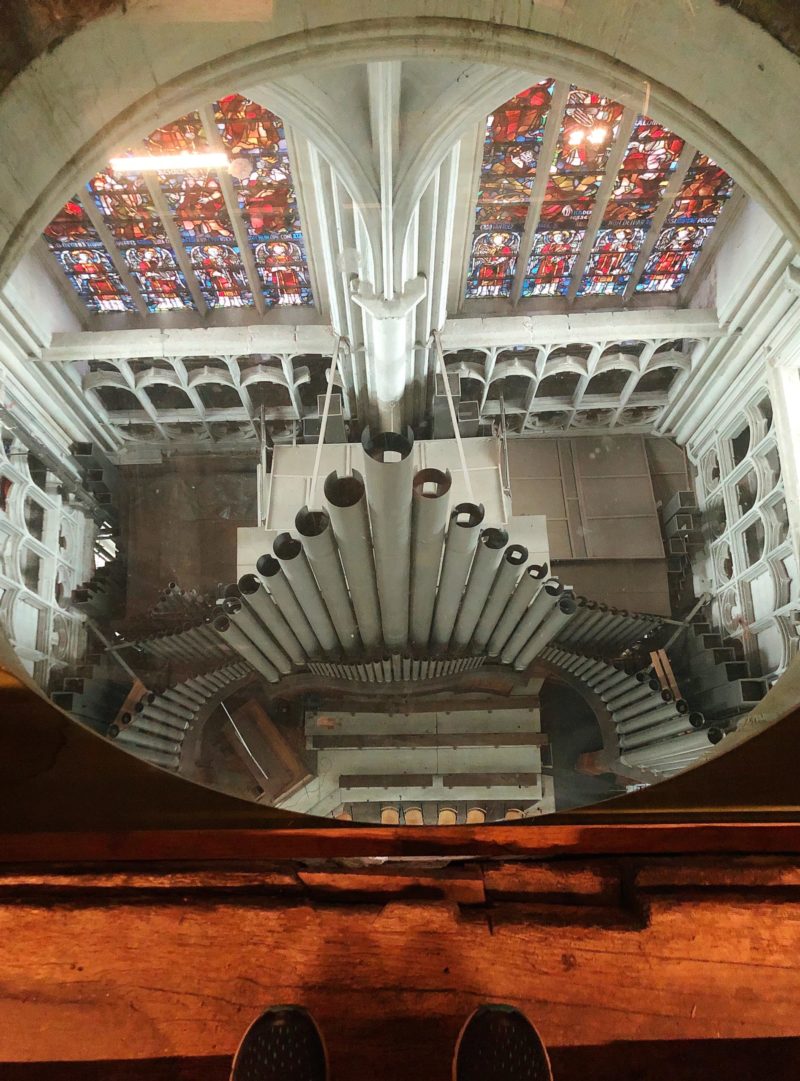
As you climb up the tower there are multiple exhibit stops sharing unique parts of the the building’s history. Upon entering each visitor is given a guide, and there are also very informative displays throughout. Definitely a must-see when you visit Mechelen!
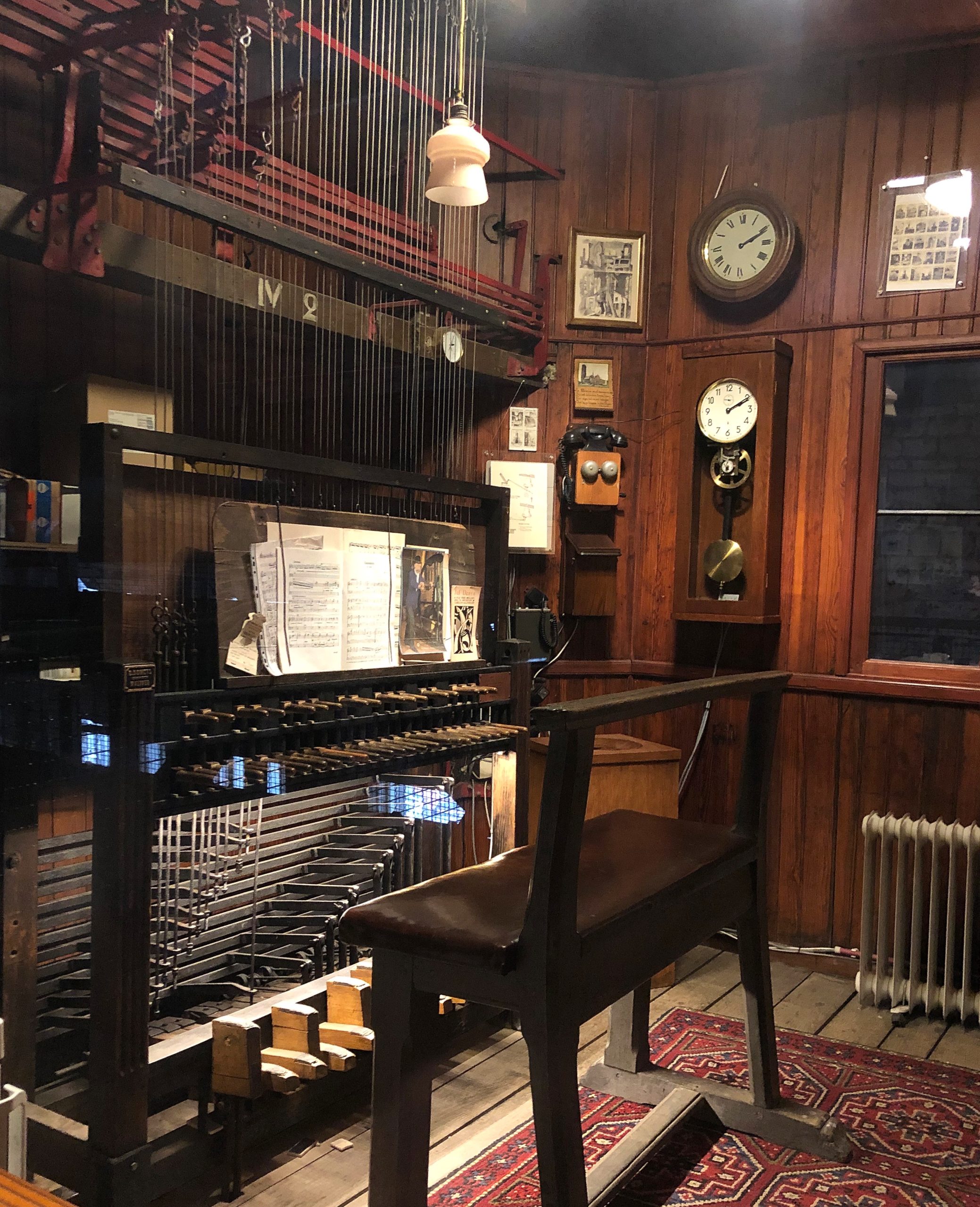
One of my favorite stops along the climb was seeing the giant bells, some of which were cast over 500 years ago! Popping into the old carillon chamber is another cool part of the experience! A carillon is a set of bells that is played using a piano-like mechanism. Historically the bells of St. Rumbold’s were used to share the time publicly across the city. Having access to the precise time became increasingly important in the 1800 & 1900s as Mechelen’s railroad infrastructure developed.
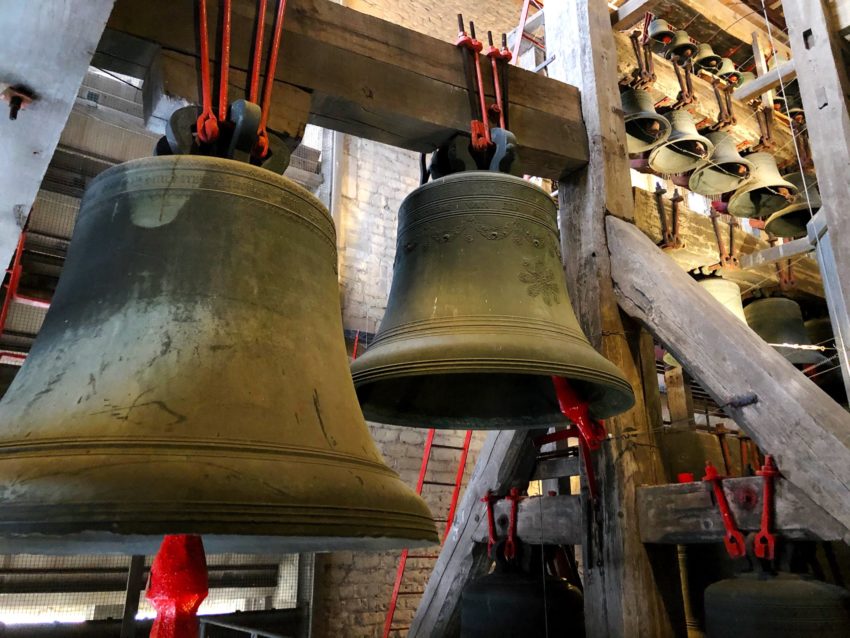
View this post on InstagramA post shared by Courtney in the Middle Seat (@courtneyinthemiddleseat) on
Still not sure if 500 steps is worth it? Once you get to the top of the Tower, there is a Skywalk where you can look out over the whole city of Mechelen, even seeing as far as neighboring Leuven.
If you're visiting Mechelen with kids, St. Rumbold's Tower has activities at each stopping point and makes for a great family idea! (As long your kids can walk themselves, and you're not carrying anyone up!)
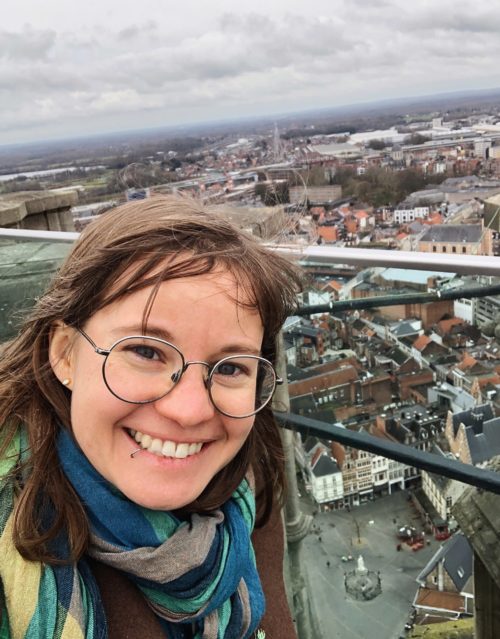
Opsinjoorke Explained
What at first seems to be a statue of a whimsical, yellow marshmellow-esque man actually has a centuries old backstory that is neither cute nor funny. The ‘Opsinjoorke’, as he is known today, symbolizes the immoral man known by the community to mistreat his wife. In the 16 & 1700s divorce was taboo throughout Christian Europe. Originally called ‘sotscop’, this icon was created in Mechelen in the form of a wooden doll in 1647. Neighbors would hold a sheet or cloth tarp, throwing the sotscop into the middle and flinging him into the air as symbolic punishment for his behavior.
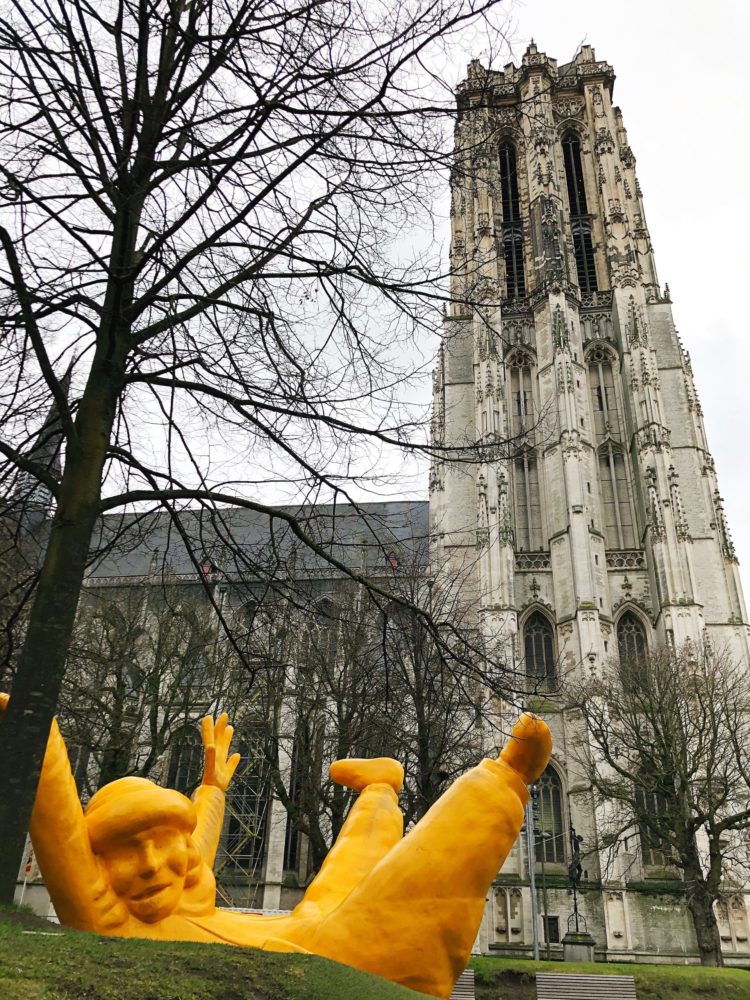
The throwing of the sotscop became a part of public celebrations and parades, and 1775 was a turning point in the history of this tradition of Mechelen. During a parade on July 4, 1775, the doll flew off the sheet into the crowd, careering toward a man from Antwerp. Controversy ensued, as onlookers claimed that the Antwerper had tried to steal the doll. From this point, the the doll became known as ‘Opsinjoorke’, coming from ‘sinjoor’, the commonly used nickname at the time for people from Antwerp. In front of Town Hall you will see another statue of the Opsinjoorke, this one cast in bronze.
What's for Lunch?
Check out De Vleeshalle!
First opened in 1881, the historic Mechelen Meat Market, or De Vleeshalle, is now open as a artisan food hall with vendors offering lunch options from around the world! Despite the name, which literally translates from Dutch as ‘the meat hall’, De Vleeshalle has options for vegetarians, vegans and omnivores alike! As Mechelen’s population grew, De Vleeshalle was designed by architect Victor Louckx as an indoor market to accommodate the butchers and city’s increasing demand for meat products.
Over the next few decades the building was modernized with technological advancements of the time. This included electricity, running water and refrigeration. Unfortunately, after WWII the building use went into decline and officially closed in 1967. Later it was used as on office for unemployment benefits. In April of 2019 De Vleeshalle began the next chapter in it’s history as a food hall and small business space!
Tips: De Vleeshalle is open for lunch and dinner, but closed on Mondays. Also, heads up that they are cashless.
The ground floor is home to more than a dozen food stalls, and while the 2nd and 3rd floors house various small businesses. Currently De Vleeshalle offers avocado grain bowls, tacos, burgers, artisanal coffee, croquettes and more! I’m not sure how often the vendors and businesses turn over or rotate, so I advise checking the website before getting your heart set on a certain cuisine.
Coffee Break!
If you’re looking for a high quality latte or a delicious cappuccino, go to Noen, located at Leermarkt 24. The best part about coffee in Belgium is that it usually comes with a little treat! (I went to Noen after realizing that De Vleeshalle was closed, so the little nibble was even more appreciated!) Noen is a cafe and breakfast / lunch bar that also serves up ice cream. When I arrived on a Monday afternoon it was already quite packed, and I just took my coffee to go. Note that they are are cashless! Read more about the experience at Noen here by Solo Sophie.
Beans is the other coffee shop I heard great reviews of, but it is closed on Sundays and Mondays so I didn’t get to try it myself. If you make it Beans, let me know if it lives up to the travel blogger hype.
Large Beguinage of Mechelen
The influence of religion on the history of Mechelen cannot be overstated and is intertwined with so many of the cities’ attractions today. If you still have energy after climbing St. Rumbold’s Tower, take time to walk around Mechelen’s Large Beguinage. During the Middle Ages small groups of women began coming together, bonded in living religiously devout lives but without ascribing to a specific religious order. By the early 1200s the term ‘Beguine’ was being used to describe the women. The trend spread within northern European countries including modern day Belgium, Netherlands, France & Germany.
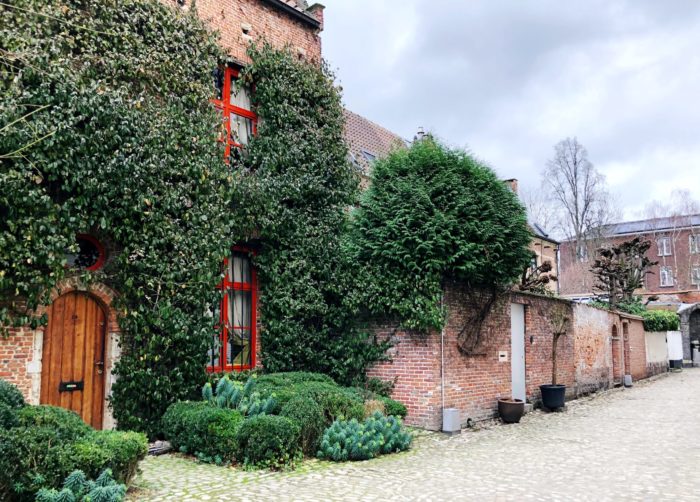
Most Beguines formed communities together which were called ‘beguinages’. Due to the volume of men fighting in the Crusades at the time, the number of uncommitted adult women rose throughout Europe. In Belgium beguinages often included individual homes within walled areas, with the women supporting themselves through nursing or textile crafts. While living within the community, Beguines committed themselves to living a chaste live, but were free to leave the community and marry at will. (Learn more here from the Economist.)
Mechelen’s earliest beguinage was founded in the 1200s. Over the course of the next few centuries moved back and forth between the the city and its outskirts. Today you can wander around the area of the Large Beguinage, taking in the peaceful atmosphere and historic architecture.
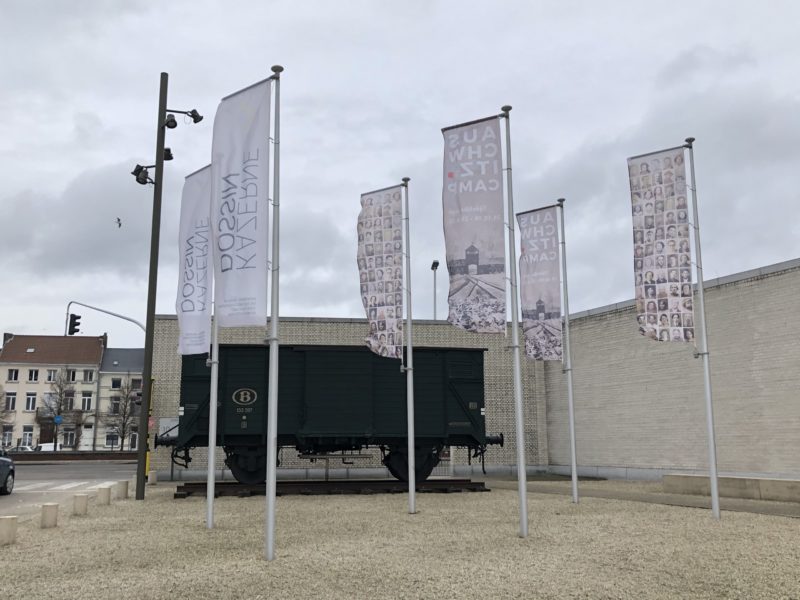
Never Forget.
Visit Kazerne Dossin:
Memorial, Museum and Documentation Centre on the Holocaust and Human Rights
World War II was a dark time in Mechelen’s history. The fruits of Mechelen’s advanced development during the Industrial Revolution were perverted by Nazi leadership, and the city became a center for the transport of Holocaust victims to death camps, including Auschwitz. Travel blogging is often light and fun, but taking time to acknowledge the tragic and evil history of a site is critical to really engaging on a deeper level with a city or destination.
Kazerne Dossin opened in 2012 to share the history of the Holocaust in Belgium. Today the museum and memorial take on a loftier mission to, “reflect on contemporary phenomena of racism and the exclusion of communities and on discrimination for reasons of origin, faith, belief, colour, sex or sexual orientation. Additionally, Kazerne Dossin seeks to analyse group violence in society as a possible stepping stone to genocides. Thus conceived, this museum makes a fundamental contribution to the educational, social project in which citizenship, democratic resistance and the protection of individual basic freedoms are central.”
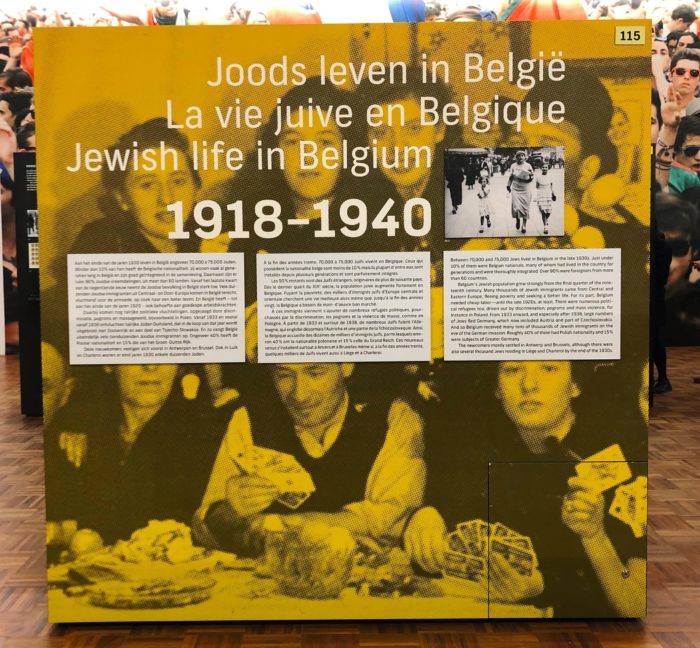
Plan to spend at at least a few hours here. Even if you have visited other Holocaust museums and memorials, make sure to come to Kazerne Dossin to learn about the specific experience from a Belgian perspective. Standing in the spot where thousands of individuals where transported to their death is an experience that cannot be put into words. Between 1942 and 1944, over 25,000 Jewish, Roma and Sinti individuals were deported from the Dossin barracks, and only just over 5% survived the war.
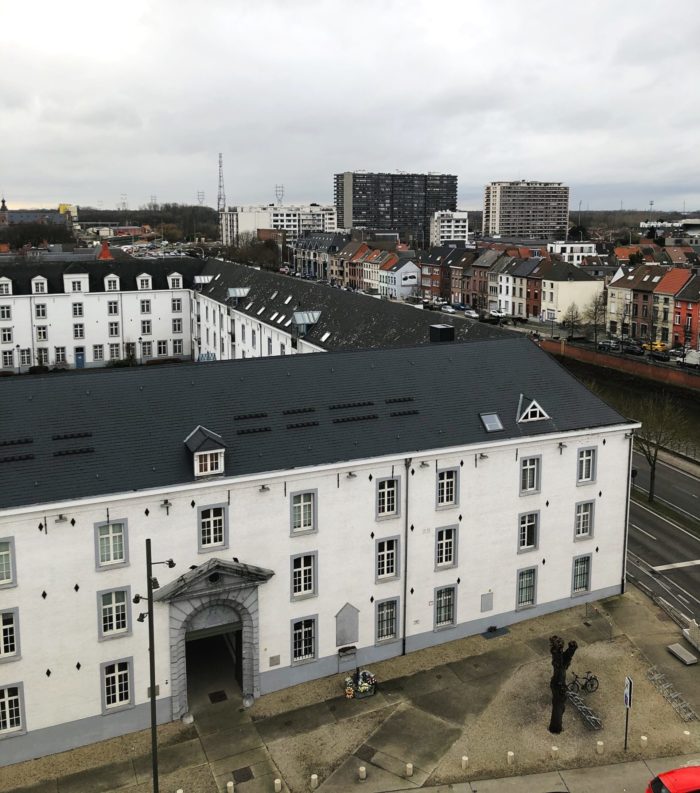
Practical Points for Visiting Kazerne Dossin
There are two different admission fees: one for the permanent exhibit and one for the rotating exhibit.
There are lockers in the basement to put your bag or coat. Make sure to have a 1 EUR coin to get the locker key.
There is NOT a cafe at the museum, so eat before you visit. There is a small vending machine in the basement, but it is really limited. Also, if keeping kosher is a concern, I would reach out to the museum in advance to inquire about nearby dining options.
Kazerne Dossin is closed on Wednesdays and on Jewish holidays such as Rosh HaShanah and Yom Kippur. Check their calendar or give them a call if you’re not sure about these dates.
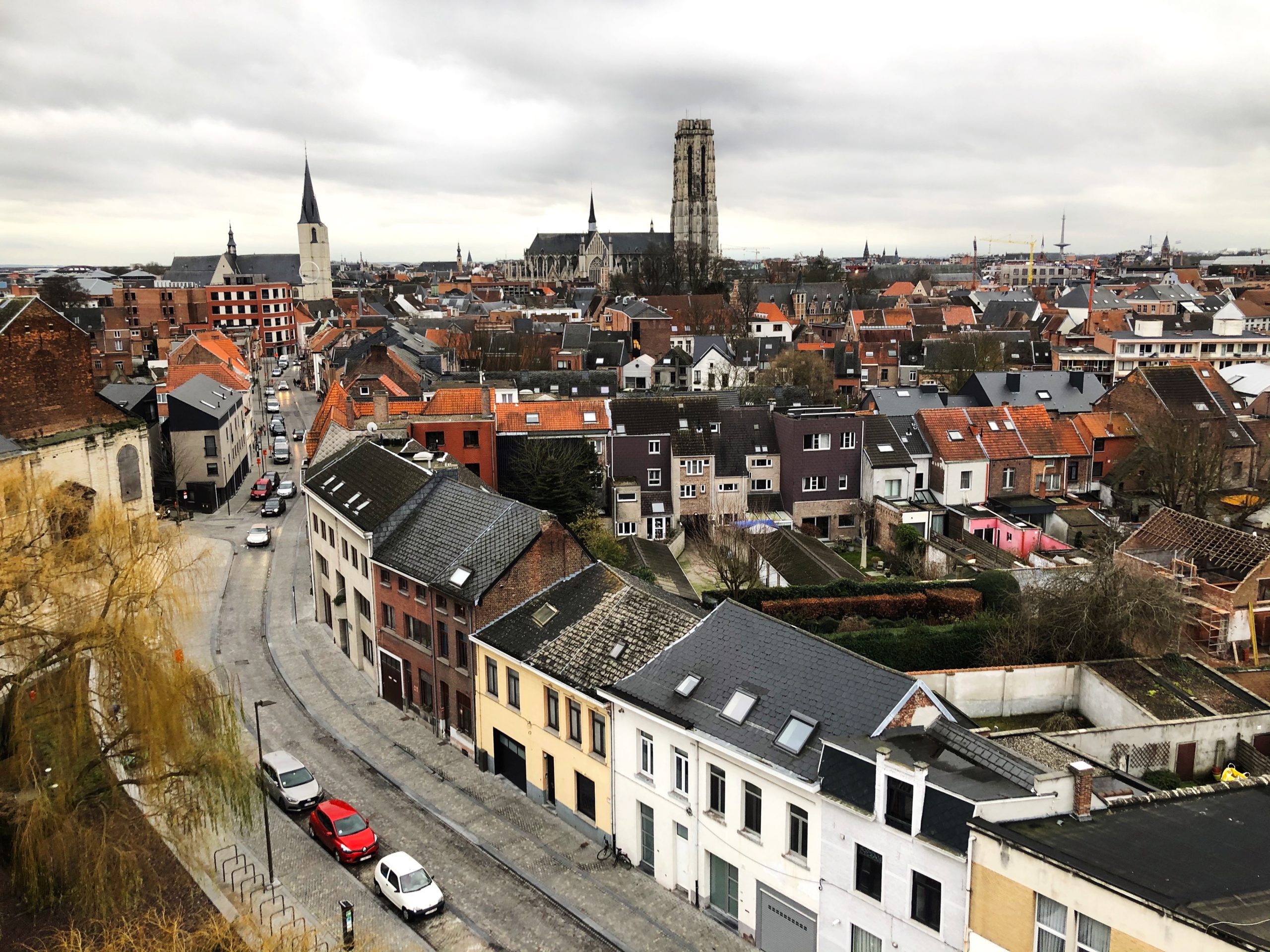
...and More!
Mechelen is a gem of a city, and you need at least a day to visit, if not more! Honestly, I spent only less than a day, and I wished I had more time! Here are the sights I will be looking forward when I next visit Mechelen.
Sense-sations Booklet -Visit Mechelen Tourism’s office to purchase a booklet (only EUR 4.5) offering a guide and vouchers for treats from shops around the city.
Mechelen Muurt – A series of 10 street art murals throughout Mechelen that were coordinated by artist Gijs Vanhee
Museum Hof von Busleyden – Explore the history of Mechelen from the Renaissance forward
Speelgoed Museum – The “Toy Museum” sharing the history of toys and popular culture items from around the world.
Het Anker Brewery – Take a tour of one of Belgium’s oldest breweries!
Getting There - Transportation To & From Mechelen
First, it is important to know that Mechelen, Malines, and Mechlin are all the same place just in different languages. This can be a bit confusing because if you’re taking the train from Antwerpen to Mechelen the sign may actually read ‘Avners -> Malines’ if it’s in French. Mechelen is conveniently located between Brussels and Antwerp on the Inter-City train route, making an easy day trip. It should only take about 20 to 30 minutes on the train. When I traveled from Antwerp to Mechelen on a weekday, roundtrip fare was only EUR 8.50.
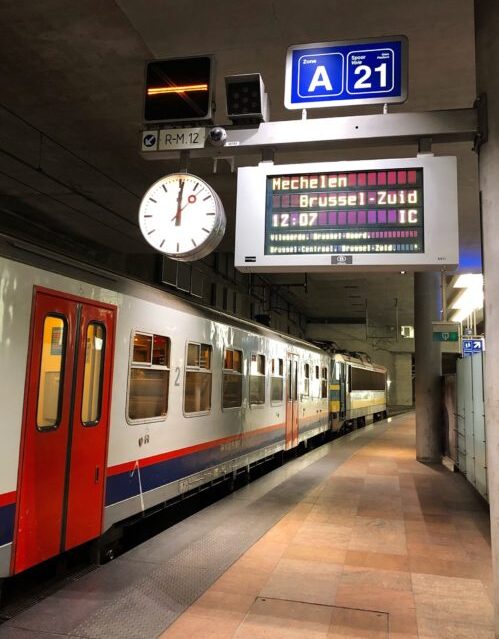
Train Stations in Mechelen
There are two train stations in Mechelen: Mechelen & Mechelen-Nekkerspoel.
Mechelen station is located at the south-eastern end of the city, and Mechelen-Nekkerspoel is near the north-eastern end. Either station is about a 15 to 20 minute walk from the very center at Grote Markt. If you’re planning to follow my guide and start with visiting Brusselpoort, get off at the Mechelen station. If you want to be near the Speelgoed Museum or more north, take the train to Mechelen-Nekkerspoel. Just make sure your train is stopping at the one where you plan to alight because there is less frequent service to Mechelen-Nekkerspoel.
Planning your first trip to Belgium? Read my post here on the 12 things you should know before you go!
Have any questions or want more tips about any the sights in this post? Or, if you have other suggestions for history lovers who are headed to visit Mechelen, let us know in the comments!



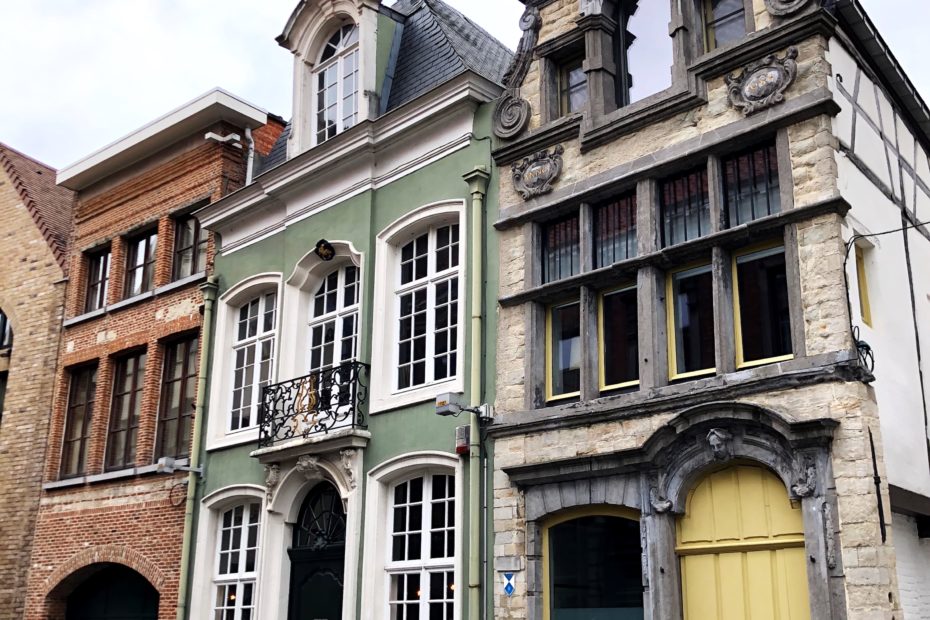
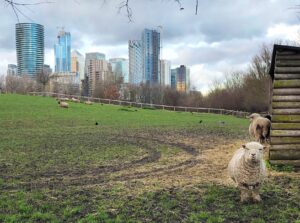
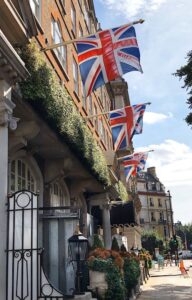
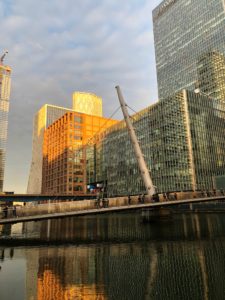
The architecture and history in Europe never ceases to amaze me and Mechilen is certainly no exception. Like you, I am not a shopper, but the Cacao Project is right up my alley. I can never say no to some good chocolate.
What an extensive and informative guide to this charming town! I had never heard of Mechelen but it looks like a lovely place. It reminded me of Amsterdam in some pictures. And being less known than Brugges it would be nice to walk around.
Yes! It was such a lovely city to just walk around and take in the architecture. Also, Belgium is really easy to navigate around by train, so getting to Mechelen is a breeze!
Mechelen looks so idyllic! It’s so nice that its not far from either of the large cities in Belgium!
So informative! It looks like a great city and I love the shot of city hall, such amazing architecture!
I traveled by bus once from Brussels to Antwerp and I had no idea what a beautiful and historic city I passed right by! From reading this, I think I could happily spend a week in Mechelen if I ever make it back to Belgium. Thanks for putting it on my radar!
Carrie Ann – Thanks for reading my post. I hope you make it back to Belgium to do even more exploring! I didn’t get to see Brussels on my visit, so I am also hoping to return again!
I love the back story of Opsinjoorke. It’s so usual to tour a new destination and see something but not realize the cultural significance of it. So I love little anecdotes like this to give you an understanding and appreciation of it’s historical roots.
Thanks, Jay! I completely agree. There are so many fun stories and historical tidbits around us all the time that we often don’t even notice. 🙂
Mechelen is so beautiful! Your travel guide is so detailed. There are so many places to visit and i agree a day in the city wont be enough
Grote Markt looks like my kind of place! Exploring it around dinner would be awesome. It’s so fun that they decorate the whole city for Valentine’s Day- very unique.
I’m not a huge history fan but this is so detailed and informative, I feel like I’ve learned so much! The most interesting part to me was when you spoke about the Holocaust documents
Thanks, Lydia! The connection to Holocaust history is actually why I wanted to visit Mechelen in the first place. It was only after I started doing some research that I realized there is a lot to see and do in the city.
The photos are just incredible. I am intrigued! I have never been to Belgium, unfortunately. But your blog has moved me there … Thanks for sharing!
I am desperate to get to Belgium! This was so interesting to learn about Mechelen, which I had not heard of before! I love all your photos. The architecture in European cities always fascinates me.
Thanks, Andrea! I hope you make it to Belgium! The architecture is really stunning. Just meandering through the streets is a fun experience.
Such an informative, thorough post! I’ve only been to Belgium once and was jet-lagged most of the time haha I need to go back! I love learning about the rich history of these places.
Thanks, Kylie! I hope you make it back!
Wow, what a beautiful place! The Salmon Building seems to have a long history. Definitely sounds like its worth a visit fom the UK post covid
Katy – Absolutely a great place to visit! It’s very easy to get to by train.
Wow! Seems like there’s so much to see and do! So picturesque as well! Would definitely love to go 🙂
Thanks! Mechelen is definitely worth a visit!
The city seems very beautiful and with an interesting history! I would love to visit one day!
I have been to Mechelen to visit a friend last year and I wandered a bit in this lovely city. I liked it but I had no clue about the history behind it. Thanks for sharing all of this, I learnt so much!
This is such an amazing post Courtney!
That view from St Rumbold’s tower is epic! And Salmon Building has such an interesting history. I hardly knew mush about Mechelen before today, but your history lovers guide sure made the history lover in me fall in love with the place. Thank you for enlightening me not just about Mechelen but also what Beguinages were!
So fascinating! I learned so much about the historical aspects of Mechelen as well as many things I’d like to see and do now. I would love to climb St. Rumbold’s Tower and stop along the way up. It would be a work out, but looks to be well worth it. I would also love to try the orange basil-filled truffles and marzipan rose at the Cacao Project… because I am such a foodie and those flavors sound so adventurous. Finally, I am deeply saddened by Mechelen’s historical role during the Holocaust. I will never get my head around the horror of what happened.
I had not heard of Mechelen before, this is an awesome guide – so comprehensive & beautiful photos! I would love to get there and visit someday, the architecture looks quite amazing to see.